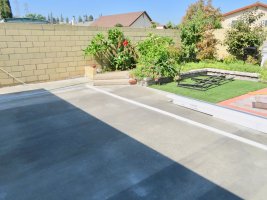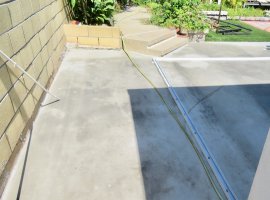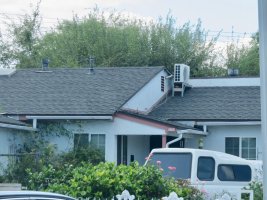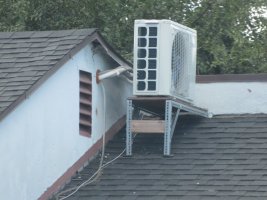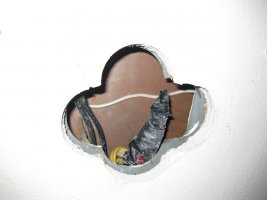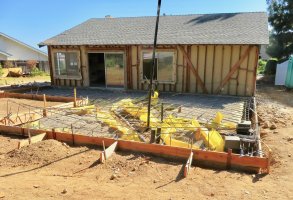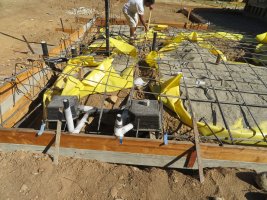mtlogcabin
SAWHORSE
Do you make the HVAC guys open up their hydronic systems since it is a re-circulation system which will have water running 24/7 and fuel oil pipe systems and verify they have reamed the cut pipe ends as required by the IMC?
I am not saying you are wrong in verifying compliance. However it is usually better to observe the worker and educate them as to the reason for a code requirement than to punish them with a correction.
Copper
1203.2 Preparation of pipe ends.
Pipe shall be cut square, reamed and chamfered, and shall be free of burrs and obstructions. Pipe ends shall have full-bore openings and shall not be undercut.
1303.2 Preparation of pipe ends.
All pipe shall be cut square, reamed and chamfered and be free of all burrs and obstructions. Pipe ends shall have full-bore openings and shall not be undercut.
I am not saying you are wrong in verifying compliance. However it is usually better to observe the worker and educate them as to the reason for a code requirement than to punish them with a correction.
Copper
- Pinhole leaks are small leaks that come about from the process of "pitting corrosion" on the inside of the pipe; this is one of the most common causes of leaks in copper pipes. While the exact causes can be difficult to pin down, they're often related to water chemistry. The corrosion can be a result of well water, acidic water (pH <7), hard water, excessively soft water, and even chemicals added by the water provider. Once a leak actually appears (usually in a horizontal run of pipe), it's likely there's already plenty more interior corrosion to be found.
- Standing water in a copper line can not only begin to corrode the pipe (if the water is particularly aggressive, or contains microorganisms), but in a new pipe it can inhibit the formation of the protective oxide layer mentioned above. The remaining "bare" areas of the pipe's interior are left vulnerable to corrosive water once it starts to flow. This phenomenon has been observed with new homes and apartment complexes whose water was turned on, but were left uninhabited for some time.
- Debris isn't good to have in any pipe (or stuck in screens/aerators), but it poses a particular threat inside copper. Like the standing water mentioned above, things like debris from installation/repair, iron deposits from a rusting water heater, and sediment in the supply can prevent uniform formation of the oxide layer inside the pipe, making those areas more vulnerable to corrosion.
- Joining copper requires the use of flux and solder: the former for cleaning and priming, the latter for the actual joining. With older systems, when too much flux was applied to the pipe, it could run down the interior. Because acids are a key component of flux, this could lead to corrosion in those areas. Code now requires the use of water-soluble flux to prevent this from occurring.
- Before it's ever soldered, pipe has to be cut. A bad cut, failure to ream (deburr) the pipe afterward, or too much solder (which can remain inside the pipe) will lead to excessive turbulence in the area - think of a boulder in a rushing stream - that ends in a process called "erosion corrosion". If you've ever seen horseshoe-looking pits inside a corroded pipe, this was the cause. The increase in the water's velocity inside the pipe can also lead to water hammer.
- Some older homes have their electrical system grounded to their copper plumbing system. When this is done incorrectly, stray current can run through copper pipe, hastening external corrosion. It's also possible for DC current from an outside source (like some mass-transit systems) to find its way to a residential copper system; the resulting electrolysis will likewise eat at the copper. Luckily, such electrical-related issues are rare.
- Soil quality can promote exterior corrosion in buried copper pipes. Soil that's high in sulfates, chlorides and other chemicals can attack copper in the right circumstances, as can soil having a low pH. External corrosion that can't be traced to electrical issues may be the result of such soils.
1203.2 Preparation of pipe ends.
Pipe shall be cut square, reamed and chamfered, and shall be free of burrs and obstructions. Pipe ends shall have full-bore openings and shall not be undercut.
1303.2 Preparation of pipe ends.
All pipe shall be cut square, reamed and chamfered and be free of all burrs and obstructions. Pipe ends shall have full-bore openings and shall not be undercut.


